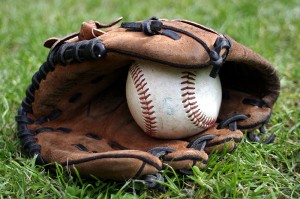What is arthroscopic surgery?
Arthroscopic surgery is a technique that orthopedic surgeons use to diagnose and repair structural damage within a joint. The surgeon makes 3 or 4 small incisions around the joint, about ½ inch each. Here, a fiberoptic camera is used to see within the joint and miniature surgical tools are used to perform the repair.
Arthroscopic surgery of the shoulder is an outpatient surgery, which means that you will not have to be admitted to the hospital. You will return home shortly after the surgery is over.
Arthroscopy of the shoulder joint has been a major advancement in surgical technique. This procedure allows less cutting of intact tissue to perform repairs, allowing for faster recovery times than with open surgery.
What types of shoulder surgeries can be performed using arthroscopic technique?
Dr. Shapiro performs many types of shoulder arthroscopy. Among those are:
- Rotator cuff repair
- Subacromial decompression (removal of bone spurs)
- Glenoid labrum repairs (SLAP tears)
- Repair of shoulder instability (dislocation)
- Biceps tendon repair
- Bursitis
- Debridement due to arthritis
- Frozen shoulder release
How long will my surgery take?
Most surgeries will take 45 minutes to 1 hour. You will then be required to stay in the recovery room for about another hour. You will then be discharged home. Please be sure to make arrangements for a ride home, as you will not be able to drive the day of surgery.
How long is the rehabilitation process after shoulder arthroscopy?
This depends on the type of procedure you had performed. It is important to understand that physical therapy is an important piece of recovery. You must be committed to the post-operative rehab if you wish to achieve the best outcome.
General rehab guidelines for specific surgical procedures are as follows:
Rotator Cuff Repair, SLAP Repair, & Shoulder Dislocation Repair: Physical therapy is grouped into several phases, beginning with gentle mobility and progressing to strengthening through the full range of motion. The process generally takes 4-6 weeks. Dr. Shapiro will provide both you and your physical therapist with specific instructions following your surgery.
Bone Spur Removal: Because the shoulder is left structurally intact, the rehab process flows quicker, about 6-8 weeks.
How much pain will I have following my shoulder surgery?
This varies greatly from patient to patient. You will be prescribed pain medication following surgery, along with instructions for icing the shoulder, which will help control excessive swelling. During physical therapy sessions, you will be asked to move the shoulder joint in order to restore full arm motion.
This may cause an increase in your pain level, and for this reason it is recommended that you take your pain medication 45 minutes prior to the start of therapy sessions. In time, you will need to take less pain medication.
Will I have to wear a sling following surgery?
This depends on the type of surgery that you had performed. For rotator cuff repairs, SLAP repairs, and dislocation repairs, you will be required to wear the sling for 2 weeks after surgery. For subacromial decompression surgery, a sling may be worn for comfort measures following surgery, and discontinued as pain decreases.
Can I take a shower following surgery?
Showering is permitted 72 hours following surgery.
When do I follow up with Dr. Shapiro following my arthroscopic surgery?
Dr. Shapiro or his physician assistant will follow up with you 1 week following your surgery. The goal of this visit is to make sure that your pain is under control, and the incision is free of infection and healing well.
Physical therapy is also prescribed at this time. This visit is designed to give the patient an opportunity to ask any new questions that may have arisen following your surgery.
When can I return to work?
Of course, this is highly dependent upon your occupation. You will be unable to actively use your arm following rotator cuff repair, SLAP repair, or dislocation repair. This is important in order to allow for proper healing and to not disrupt the surgical area.
If you have a sedentary job or are able to secure restricted duty where use of the arm is not required, then you should anticipate being out of work for 5-7 days. If you are required to use your involved arm, then time away from work is greater. You should discuss your situation with Dr. Shapiro prior to surgery so that you can make appropriate arrangements with your employer.

 Summers in the great Pacific Northwest brings out the adventurous side in all of us.
Summers in the great Pacific Northwest brings out the adventurous side in all of us.  The
The